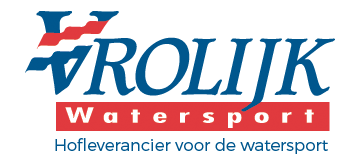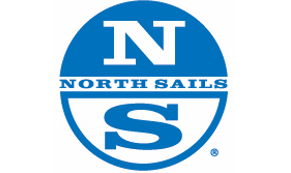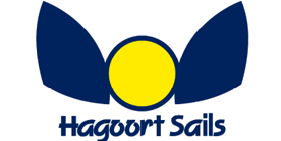The North Sea Race - Smart Moves and Tough Breaks
20 mei 2015 - “BOOM!”…”CHRIS, GET UP HERE!” A sharp, loud noise on a boat is never good. As the boatspeed quickly dropped the first thought was a collision. I leapt up from the bunk, a few minutes into a short rest, and grabbed my lifevest before taking a step up the companionway.
Early Friday morning a combined fleet of over 70 sail racers, primarily Dutch and British but joined by several French and Belgian entries, motored out of Harwich Yacht Club and down the bucolic River Orwell, past the Pin Mill and old wooden boats on their moorings, and headed out the harbor mouth toward the start area for the annual 185 mile North Sea Race.
The 18 strong doublehanded class were given the honor of the first start, and among the RORC Race Committee on the Start ship “Ocean 1” there was much interest in how such a large group of dual handed teams would handle the start. In other RORC races the doublehanders start among the crewed boats in ratings groups based on size and speed, and many take care to avoid the mayhem and riot as the crewed boats fight for position on the start ship end.
Counting the final seconds to the start, RORC Race Director Nick Elliot was struck by the quality and skill of the class as they chose their lane and formed a near-perfect line. In three years the number of doublehanded participants had tripled, but this was further evidence of how level has been dramatically raised by top boats and sailors electing to compete doublehanded. This perfect moment was fleeting, as one boat turned early toward the line and several others flexively followed suit, and with several over the line early the group was recalled for another try.
On the second start there was a little more care to avoid crossing early and only one boat recalled, and Maverick found a broad open lane the start ship end. In clean air we crossed with speed and held it to the first mark, just over a mile up wind, with Junique Raymarine Sailing Team pulling ahead while keeping pace with the bigger Batfish and Avanti. Xcentric Ripper edged closer, and nearing the second mark we tacked over them after rounding and eased the sheets for a tight reach to the next course buoy. John and Robin perched on their rail and exchanged a wave and a smile, perhaps not thrilled to have to overtake in our foul wind, while big Batfish slowly overtook us to windward and briefly put both of us in their foul air.
Several miles out we rounded the pillars of an old WWII offshore battery, trailing Junique and Batfish and still running parallel with Xcentric. Maverick had a fine first hour but we had a long race ahead. Ripper quickly hoisted their Code 0 and we followed suit a minute later, but a halyard twist forced us to drop the sail and rehoist after sorting it. Several lengths lost, but a minor annoyance with 175 miles ahead.
The course took us south toward the boundary of a large wind generator park, which are sprouting up quickly on both sides of the North Sea. Between expanded shipping lanes and new wind parks there are fewer options to route sailboats and family cruisers, and the North Sea Race course has been modified several times in recent years to avoid these new exclusion areas. The tide was running fast as we came to the next buoy, leaned over in the current, and along with Push Up and the crewed JPK 1080 Leon we hoisted jibs and doused spinnakers, and continued past against he tide before tacking safely around it.
Sailing along the southern edge of the windpark the wind began to ease. Zeiljacht IL Corvo sailed a higher line and worked slightly ahead, Push-Up sailed even with Maverick on the north end of the park, while the new Sunfast 3600 Bellino and Leon checked each other out just ahead. We knew there would be lull in the early afternoon, and while now sunny and pleasant this new lull was greeted with similar sentiment and language as when we parked for during the Vuurschepen race two days earlier. The wind dropped away and a few of the later starting big boats caught up, and crews kept busy bobbing on flat seas by hoisting, playing with, and dropping sagging spinnakers, looking for ripples on the water, eating, and chasing zephyrs and whispers.
Calms make for strange bedfellows, and after hoisting our A0 spinnaker we managed a few knots speed and drifted past K-Force – a lovely Swan 45 uber-racer with a full kitted-out crew. As a light breeze filled in further we changed to our baby-blue running spinnaker, and as we were hoisting K-Force glided by and exchanged greetings and encouragement. We made steady progress on the west side of the course, while Xcentric Ripper and Push Up boldly tacked further west and were rewarded with earlier and steadier breeze.
In the simpler old days we would sail north through the night , round the Smith’s Knoll buoy off the English coast, hang a right and head back to Holland. With further offshore restricted zones now blocking the direct route, the course now veers northeast to a big light tower 30 miles away. Early in the race we rounded historic marks with evocative names like ‘Roughs Tower’, ‘Black Deep’, and ‘Long Sand’, while this modern new mark had the unworldly, and certainly unpronounceable name ‘EAOW1BAIS’.
As darkness fell the wind built to the low teens, and Maverick pick up pace and surged ahead. Boats earlier scattered in the calm now converged on the big alien light tower with the Star Wars name, while the wind built further to the high teens and low 20s. We crossed closely with fellow Ijspegelar Griel before gybing, and neatly dropped the light spinnaker before gybing back and setting course toward the familiar and human sounding Smith’s Knoll light.
Maneuvers and sail handling are tackled somewhat differently doublehanded than on a crewed boat, but without shifts of people to take turns on watch the doublehandeders face greater challenges managing rest and fatigue. After rounding the unpronounceable tower Raymond Roesink went below for a few minutes, but Griel pulled further ahead and soon fellow Scheveningen boat Flying Dolphin drove by at pace. Jameerah, a crewed J-120 sistership out of the UK were also gaining on Maverick, and weighing the loss of a few more minutes versus some precious and well-earned rest for Raymond, I popped below and rousted the big fella to help set the heavy-weather spinnaker.
Under the dark blue One Sails A5 we thundered ahead, periodically hitting 10-12 knots over ground. Over the next 30 miles we picked off the three boats that had deigned to pass earlier, but also heard over the VHF radio that one of the boats ahead in our class, well sailed Luctor with Erik and Wouter, had a collision with an unmarked and unlit buoy. Their track lay further east of us, but with foresight and seamanship they warned trailing boats of the danger.
Rounding Smith’s Knoll we gybed the spinnaker but it wrapped loosely around the forestay. Raymond sprang forward and we worked carefully back and forth over the next few minutes, finally freeing the sail and starting a fast shy spinnaker run toward home. With the heavy reaching kite we soon picked up time on the leaders and opened up distance on the trailing boats in our class. Raymond took an hour break below – though roaring and bouncing along at speed, an hour pause at this point in an offshore race was well needed and appreciated. Mav never lost her footing but sailing a high angle was hard work, and after Raymond came back up I went below for a quick rest.
Lifevest and jacket off, climb over lee-cloth into the high-side bunk. Noises all around, ticks, pings, all muffled by the whoosh of water against the hull. Lying still and soon the noise is receding, finally some rest, and then a single sharp, hard sound. Raymond is yelling something, get up, find the lifevest and take one step up the companionway.
“Spi halyard broke, the sail is in the water”. Immediate relief, no collision, mast up and Raymond safely onboard -- only a race problem and no danger. Moments later with foulies and lifevest on, Raymond and I went forward in the darkness. The sea was black with streaks of white, and on the lee side of the boat we could make out the dark blue spinnaker streaming alongside. In a curious twist of luck we had dropped the spinnaker in the water several times over the last months before we finally worked out a better way to manage drops, and though never intended as spinnaker retrieval training, we settled down familiarly side by side at the bow. Raymond reached over and took the first armful of cloth and like two old fishermen we pulled in unison over the next 15 minutes, silent except for the occasional grunt or epithet, until the sail was back onboard.
We wanted to get the A5 back up as quickly as possible on the other halyard but during the retrieval we were disheartened to find a torn section --small enough to be easily repaired shoreside, but too big and risky to temporarily tape and hoist again. We debated using the light spinnaker but it is not built for over 20 kts, and decided to press on under white sails. It was a long, draining 10 hours back to Scheveningen, watching our gains slip away and the leaders again pulling further ahead. Griel passed us at dawn, en route to a strong overall finish, well-sailed Firestorm closed the gap behind us, and later Blizzard of Uz passed to the south as they drove toward a fine podium finish. We were not alone in our suffering as several other boats tore sails or suffered other misfortune, and we held our ground behind Il Corvo and Batfish.
Approaching the low Dutch coast we faced two final legs to the finish. With wind in the low 20s we rounded the penultimate mark and started a 5 mile close reach toward Scheveningen. We unfortunately had nobody nearby to play with, but Maverick loves a running with the sheets slightly cracked and driving hard through messy seas. We sailed fast and sharp in our home waters and for a time forgot about lost chances and places. We raced by a parked tanker to the final mark, and soon crossed the line near the Scheveningen harbor mouth.
We dropped sails and tidied up on the way in, and as other finishers were jigsawed into the visitors area, we motored to our berth and tied up. We learned later at the race office that we had finished 7th of 18, on one hand a satisfying result given we sailed the last third of the race under white sails, on the other hand a hard reminder of what might have been. We watched Joost & Vrolijk as she was towed in, having been lost steerage well offshore, and seeing the severe buoy collision damage on Luctor helped put our broken line and disappointment into perspective.
Whether at Harwich Yacht Club, lunching at Pin Mill, or at the traditional prizegiving at the Scheveningen Visafslag (fish auction hall), the doublehanded teams socialize together, share stories and advice, and enjoy good humor and sharp banter. It has become a very competitive and skilled class, but also a very close one.
Chris Schram - J/120 "Maverick"
Ronde NoordHolland a/b XCentric Ripper
22 juni 2015 - Afgelopen weekeinde werd voor de 19e keer de Ronde van NoordHolland gevaren en er werd op vele fronten in alle klassen weer volop gestreden om de overwinning. De voorspellingen... Lees verder













